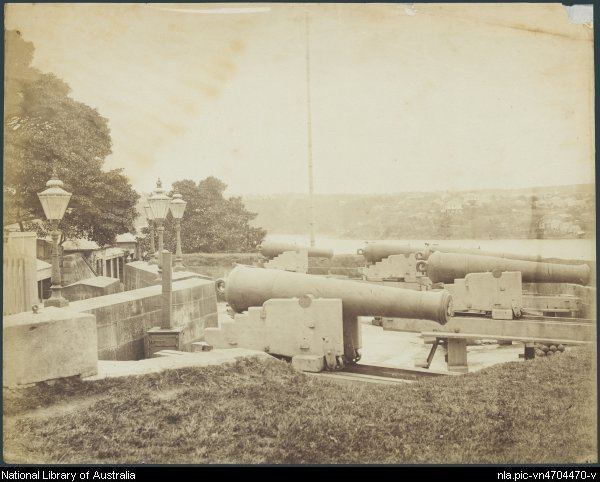Type Gun Battery Phone +61 2 9873 8500 Material Sandstone | Materials Sandstone Year built 1791 | |
 | ||
Condition Demolished between 1925 and 1932 Address Hickson Rd, Dawes Point NSW 2000, Australia Similar Fort Macquarie, Fort Philip, Ben Buckler Gun Batte, Beehive Casemate, Signal Hill Battery | ||
The Dawes Point Battery is an historical fortification that was located adjacent to the southern pylon of the Sydney Harbour Bridge at Dawes Point, New South Wales, Australia.
Contents
History
The first known building to be constructed on the site of Point Maskelyne (later renamed Dawes Point) was an observatory constructed in early 1788 by Lieutenant William Dawes.
A powder magazine was installed in 1789 followed by the Battery in 1791. In 1798, the Governor's concerns regarding the arrival of schooner Argo prompted defensive measures at the Battery. The battery was constructed under the direction of George Barney, one of Australia’s most important Colonial Engineers of the mid-19th century. The site had previously been used as a cemetery for prisoners executed at Sydney Gaol (1797-c1830). The fort was expanded substantially in 1819 when Governor Lachlan Macquarie ordered convict Francis Greenway, who was an architect to design and construct a castellated fort at Dawes Point, which at the time was only meant to appear threatening to ships sailing into Sydney Harbour. In that same year sandstone blocks were quarried on site at Dawes Point Park for the construction of the fort.
Dawes Point fort received many upgrades throughout the 19th century as new threats to Britain’s empire arose. The fortification was intended to be the first line of defence in the event of an attack by the Spanish in 1790 and further threats of Napoleon’s French troops in 1810.
In 1850 during the Crimean War, there were further fears of an attack by the Russian Pacific Fleet so the battery received additional subterranean powder magazines and occupancy was taken up by Royal Artillery. In this year the Dawes Point Battery became the command post for a series of fortifications that were built around the inner harbor, which included Fort Denison.
Colonel George Barney was given the task renovating Sydney’s fortifications and an extension of Dawes Point in 1860.
Sydney’s Harbour defences had been relocated to the entrance of Port Jackson by the end of the 19th century, thus rendering Dawes Point obsolete. The battery was then used to store the Commandant of the Australian Military from 1901 and 1903.
Most of the fort was demolished in 1925 to make way for the construction of the Sydney Harbour Bridge. In 1932 the remaining buildings that served as a headquarters for Dorman and Long, the British company responsible for the construction of the Sydney Harbour Bridge were demolished and the whole area landscaped and set aside for public use.
